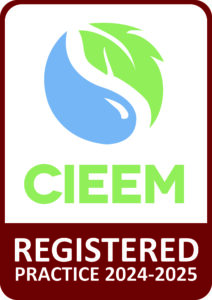Armstrong Ecology Ltd is a Chartered Institute of Ecology and  Environmental Management (CIEEM) Registered Practice.
Environmental Management (CIEEM) Registered Practice.
Armstrong Ecology Ltd is based in south Sheffield and is able to offer ecology surveys, reporting and advice as described below.
The the core aim of the business is the provision of practical and pragmatic ecology consultancy services working directly with clients in South Yorkshire, Derbyshire and the Peak District. On occasion survey work/support to projects is undertaken in other nearby counties such as Nottinghamshire. This assists in being able to give high quality ecology support, keeping down travel time/costs and reducing the carbon footprint of the business/your project.
Ecology surveys
An initial survey and mapping of a site to identify if important habitats are present and the presence or likely absence of protected species such as those listed below. The survey normally includes a desk study based on data from the relevant local Biological Records Centre and can be undertaken at any time of year.
Botanical Survey to National Vegetation Classification habitat type (where applicable). Timing is habitat dependent but generally undertaken between May and September.
An assessment of trees and/or buildings to assess their bat roosting potential. Can be combined with a Preliminary Ecological Appraisal/extended Phase 1 habitat survey or undertaken separately. Can be undertaken at any time of year. Bat droppings can also be collected for DNA analysis to determine the bat species associated with them.
Dusk and dawn survey visits to establish the presence or likely absence, and type of bat roost present by recording the number and species of bats emerging from a tree or building. Survey technique can be used between May and September. Where appropriate IR night viewing equipment can be used as part of the survey methodology.
Deployment of static bat detectors and undertaking walked transect surveys to record the range of bats using a site. Survey technique can be used between April and October.
Collection of water samples (where the pond is suitable) for DNA testing to establish the presence or likely absence of great crested newt. Survey technique can be used between mid-April and the end of June.
Evening torchlight survey and placing of bottle traps for morning collection to establish the presence or likely absence of great crested newt. Survey technique requires multiple visits and can be used between mid-March and mid-June, with half the visits undertaken between mid-April and mid-May.
Placing of artificial basking locations on site and then undertaking seven survey visits to check for basking reptiles. Survey technique to establish the presence or likely absence of reptiles that can be used during suitable weather conditions between March and October.
Survey technique to characterise how otters are using a water course. Can be undertaken at any time of year but may require visits in different seasons. The use of motion activated trail cameras may also be considered as part of the survey methodology.
Survey technique to establish the presence or likely absence of water vole. Undertaken with two survey visits, one between between Mid-April and June and the other between July and September. Water vole rafts may also be deployed to aid detection.
Presence/likely absence normally established as part of an extended Phase 1 habitat survey, but may need to be conducted separately. The use of motion activated trail cameras may also be considered as part of the survey methodology if the survey is undertaken separately.
The above is not an exhaustive list, please get in touch to discuss your requirements if the ecology survey you require is not listed.
Ecology support
The following services can be provided, these would normally be based on survey work such as that outlined above:
- Biodiversity Impact Assessment/Biodiversity Net Gain calculations (BIA/BNG).
- The biodiversity component of Construction Environmental Management Plans (CEMP).
- The biodiversity component of Landscape Environmental Management Plans (LEMP).
- Biodiversity Management Plans (BMP).
- Biodiversity/protected species method statements for site clearance operations (where appropriate).
- Ecologist site supervision/Ecological Clerk of Works (ECoW).
The above is not an exhaustive list, please get in touch to discuss your requirements if the ecology support you require is not listed.
How much will a survey/ecology support cost?
In order to provide an accurate and fair quotation it is necessary to know a number of things including where your site is and what sort of survey/ecology support is required. Ideally as part of this it is useful to have a brief discussion with you to establish what you require and/or what the planning authority has requested. An accurate quote can then be provided that just covers what is needed for your project.
Please also note that as Armstrong Ecology Ltd is not VAT registered VAT is not added to Armstrong Ecology Ltd fees in our invoices.
Please get in touch to discuss your requirements and to obtain a quote.
Contact
Terms and Conditions
Complaints Policy
 Environmental Management (CIEEM) Registered Practice.
Environmental Management (CIEEM) Registered Practice.